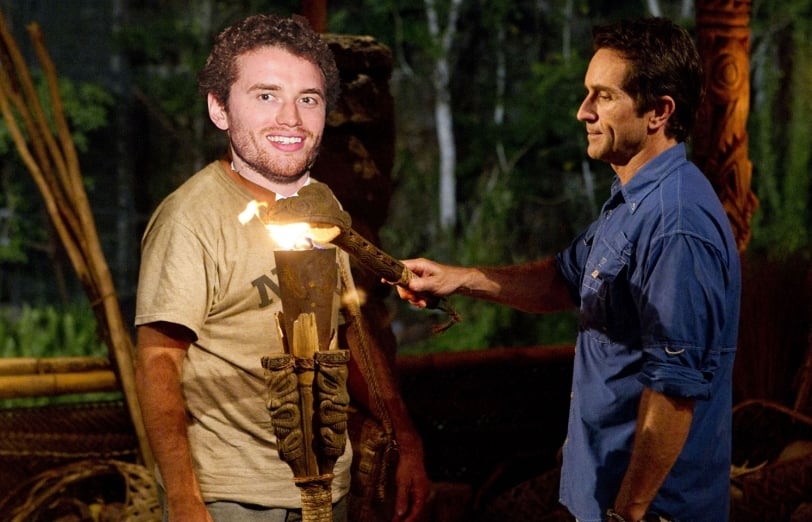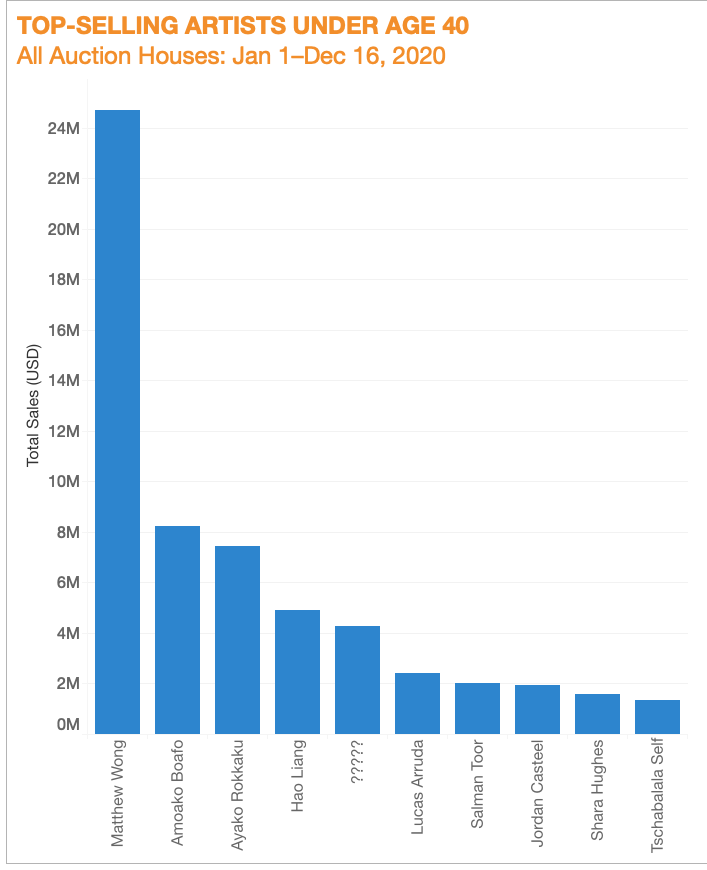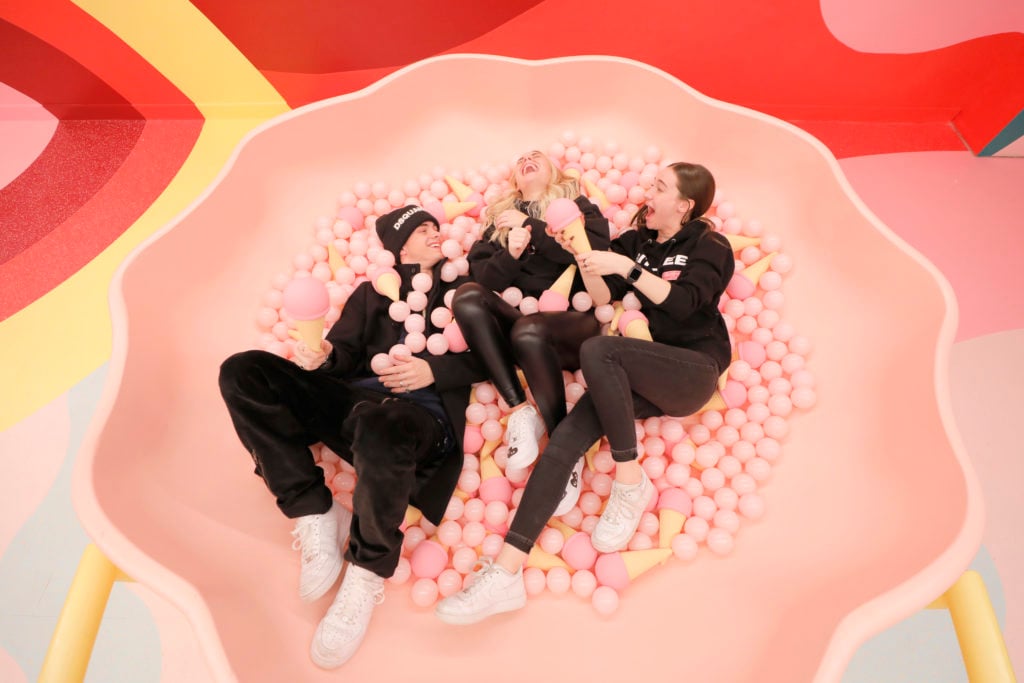Opinion
The Gray Market: How My 7 Highly Specific Art-Industry Predictions for 2020 Worked Out (and Other Insights)
Upholding an annual tradition, our columnist tests the sturdiness of his tea leaves at the end of a year like no other.

Upholding an annual tradition, our columnist tests the sturdiness of his tea leaves at the end of a year like no other.

Tim Schneider

Every Monday morning, Artnet News brings you The Gray Market. The column decodes important stories from the previous week—and offers unparalleled insight into the inner workings of the art industry in the process.
Well, it’s the end of 2020, and for once I think I can speak for everyone when I say: Jesus Christ, let’s never do that again.
In my final attempt to wrestle business as usual into the saddle of a rabid 2020, it’s time for the annual Gray Market review of my art-industry predictions for the year that was (with highlights also available on The Art Angle podcast). Join me once again in quantifying my exact level of naïveté last January…
Aside from the crushing spate of event cancellations caused by the “c” word, the biggest art-fair story of the year was the mega-deal that made Lupa Systems, the investment vehicle of former News Corp scion James Murdoch, the new “anchor shareholder” of Art Basel’s parent company. As part of the agreement, Murdoch and two of his Lupa Systems compatriots are taking over three newly vacated board seats, giving them substantial power over the group’s direction.
Could you quibble with this prediction over semantics? Sure. “Activist investors” are technically outside parties who seek to use freshly acquired stakes in a struggling company to jostle for changes unwanted by its existing management. The term would have more cleanly applied to Sergey Skaterschikov—the Russian moneyman speculated to be eyeing a larger play for MCH Group after he quietly acquired a nearly four percent stake in October 2019—or to Swiss financier Annette Schömmel, who went against the company’s wishes by trying to assemble a competing bid to Murdoch’s this summer.
By contrast, public statements made by MCH execs prove Murdoch was always seen by the company as a white knight, not a corporate raider. Still, he was most certainly an outside investor who leveraged an advantage created by MCH’s heavy losses this year and earlier to exercise major influence over its future. Select major shareholders also spent months resisting his initial offer (and subsequent revisions) before finally reaching common ground this month.
All of which means a freshly capitalized MCH Group, new voices in the boardroom, and broadened horizons for Art Basel in 2021. I’m counting this one as a win for my divining rods.
The US Department of Justice didn’t nab Philbrick until June 12. This is not on the list of reasons I moved squarely into the “defund American law enforcement” camp this year, but it certainly didn’t give me any reason to reconsider my position on the issue.
Anyway, in a fittingly absurd twist to this saga, the feds eventually caught up to Philbrick on Vanuatu, the South Pacific island that hosted season nine of reality-TV classic Survivor. As a mea culpa for blowing this one, please enjoy this ridiculously amateur Photoshop composite I made of him being voted off the island by Survivor host Jeff Probst.

“Inigo, the tribe has spoken.”
As a refresher, the bridge between last year and this one saw artists and activist groups pushing for museums to purge their investment portfolios of alleged stakes in for-profit prisons, cleanse their boardrooms of shareholders in the same (or similar) dubious enterprises, or both. Factor in art museums seeking to dam off their donor pools from fossil-fuel producers and the problematic branches of the Sackler family, and I thought we were due for a little institutional wokeness to reverberate onto Wall Street. The arts organization Souls Grown Deep Community Partnership had already led the way in 2019 by putting its endowment into impact investment funds.
But it turns out I was dead wrong.
US art institutions did not prioritize a pivot toward ethical divestment during a disastrous 2020 (leaving them another year behind the nation’s science museums). The most action we saw in this realm was another trustee ouster, in the form of private-equity titan Tom Gores’s October resignation from the board of the Los Angeles County Museum of Art. The move ended an activist-led furor over his fund’s ownership of Securus Technologies, a company that charges by the minute for phone service to incarcerated Americans.
Stepping back, the irony in this outcome is rich. In January, Blackrock CEO Larry Fink—one of the Museum of Modern Art trustees targeted by activists for his firm’s investments in for-profit prisons—became an ethical standard-bearer in the eyes of Wall Street by announcing that Blackrock would pivot its trillions of dollars in assets under management to environmental sustainability because “climate risk is investment risk.”
Of course, it’s a lot easier to focus on your portfolio balance when you’re one of the world’s largest institutional investors. Much less so when you’re an art museum stuck at 25 percent of your normal visitor capacity (if you’re open at all) because of an epochal public-health debacle. But that doesn’t change the fact that I missed this one.
By the close of 2019, there was even more momentum toward green operations in the art world’s for-profit sector than toward ethical boardrooms and investments in its nonprofit sector. I felt especially good about this call once Hauser & Wirth announced in late January 2020 that it would cancel its dinner at the summer’s upcoming edition of Art Basel so it could donate the budget to Art for Acres, a nonprofit land-conservation fund.
Yet when the Baer Faxt broke news about that donation, Chinese officials had only quarantined the city of Wuhan one week earlier to try to control some mysterious, novel new disease; there was only one confirmed case in the US; and the World Health Organization had not yet even declared the malady a “global health emergency.”
Ignorance really was bliss, wasn’t it?
As soon as the virus started pummeling the global art-fair calendar—and more important to this context, grounding so much of the highly visible (but surprisingly inconsequential) air travel it triggered—much of the pressure galleries had been feeling to shrink their carbon footprints disappeared. That shift took this prediction’s odds of coming true and promptly jammed them into a blazing coal furnace.
In fact, it turns out this estimate was way conservative. According to my tireless colleagues at the Artnet Price Database, between January 1 and December 16, the number of artists born in or after 1981 who racked up more than a milli at auction totaled no fewer than 16.
The leaders were the late Matthew Wong ($24.7 million in total sales), Amoako Boafo ($8.2 million), and Ayako Rokkaku ($7.4 million), whose market is based almost entirely in East and Southeast Asia.
Here’s a chart showing the rest of the top 10, with one caveat…

© Artnet Price Database 2020.
If you’re wondering why I’m holding back the identity of the fifth-place artist, all I can say is that it is so wild and discussion-worthy that it would be irresponsible to the rest of this column for me to drop the name and then just move on—sort of like if I walked up to say hello to you at a gallery tomorrow wearing a druid cloak and expected the small talk to just proceed without any mention of why I was styled for Stonehenge. Trust I will come back to this in January.
In terms of creative freedom, the most substantive shift Instagram made in its community guidelines this year concerned adding nuance to its policy on “breast squeezing.” The inflection point was a three-month campaign in which hundreds of users protested the platform’s repeated removal of photos depicting Black plus-size model Nyome Nicholas-Williams wrapping her arms around her bare chest to celebrate body positivity.
Protesters insisted that race played a role in the censorship. Alexandra Cameron, the photographer who shot the images, alleged that she had “posted photos of many more women—white women—who had [fewer] clothes on than Nyome that never got reported or deleted.” Nicholas-Williams made a similar accusation about the platform’s proliferation of white models free to adopt equivalent (or more risqué) poses.
In the end, Instagram moved with public opinion. A rep for the platform told Business Insider in October that all “content where someone is simply hugging, cupping, or holding their breasts” would be permissible going forward. However, “when people squeeze their breasts in a grabbing motion with bent fingers, or if there is a clear change in the shape of the breasts, that content will still break our rules.”
Is that a baby step in the right direction for artists working with the human form? I’d say so. But I also think it’s fair to say that it’s not much more than that.
In truth, I’m extrapolating here, because the Museum of Ice Cream has not replied to any of the emails I’ve sent requesting attendance data over the past couple of weeks—a valuable year-end reminder of my standing in the world at large. Nonetheless, I feel pretty safe concluding that January Me was comically off base on this one.

Museum of Ice Cream, New York. Image courtesy of MOIC.
According to the Art Newspaper’s rankings, the 20th most-visited museum show of 2019 was “Unrivaled Calligraphy: Yan Zhenqing” at the Tokyo National Museum, which drew 198,920 visitors. From what I can sleuth out online, the Museum of Ice Cream’s flagship location shut down alongside all of New York’s other nonessential businesses in March and only reopened the final week of August. Groups of visitors have been capped at 10 people since then, with tickets still priced at $39 per person in a year when everyone but the wealthy have been under financial duress.
If the Museum of Ice Cream flagship managed to draw at least 198,921 attendees in about seven months under those conditions, it will so thoroughly call into question my handle on reality that I may have to start trying to see if I can just walk through walls or levitate objects using only the power of my intentions. Unless I hear otherwise, I’m going to call this final prediction another casualty of lockdown.
That’s all for this week, and (mercifully, at last) this year. ‘Til next time, remember: if nothing else, there’s literally nowhere to go from here but up.